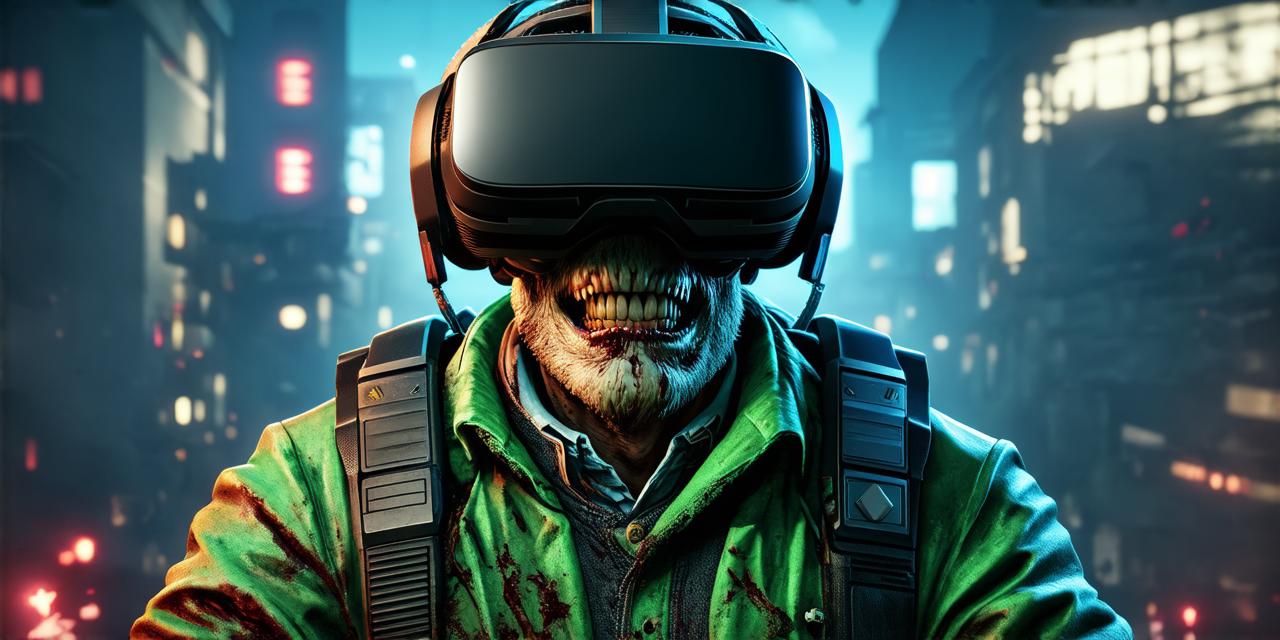Virtual Reality (VR) technology has revolutionized the way we experience games, and zombie games are no exception. These immersive and thrilling experiences offer players a unique opportunity to engage with digital environments in a whole new way.
1. Understand Your Target Audience
Before starting any development project, it’s essential to understand your target audience. This includes their age, gender, interests, and preferences. For example, if your target audience is young adults, you may want to focus on fast-paced action scenes and intense combat. On the other hand, if your target audience is older adults, you may want to focus on more strategic gameplay and storytelling elements.
2. Plan Your Game’s Storyline
A good zombie game should have a compelling storyline that keeps players engaged and invested in the game. This includes creating a backstory for the zombie outbreak and developing characters that players can relate to. You may also want to consider adding some plot twists or surprises to keep players on their toes.
3. Choose the Right Gameplay Mechanics
The gameplay mechanics of your VR zombie game are just as important as its storyline. Some popular gameplay mechanics include first-person shooter, melee combat, and survival horror. It’s essential to choose mechanics that complement each other and create a balanced and enjoyable experience for players. For example, if you’re focusing on fast-paced action scenes, you may want to incorporate elements of stealth or evasion to add an extra layer of challenge.
4. Design the Environment
The environment of your VR zombie game should be immersive and engaging. This includes creating a believable and detailed world that players can explore and interact with. You may also want to consider adding elements such as destructible objects or environmental hazards to make the gameplay more challenging and exciting. For example, you could create a cityscape environment where players must navigate through abandoned buildings and fight off hordes of zombies while trying to find a safe haven.
5. Optimize for Performance
Virtual reality games require high-performance hardware, so it’s essential to optimize your game for performance. This includes reducing the game’s frame rate and minimizing graphical effects to ensure smooth gameplay. You may also want to consider using techniques such as level streaming or asset compression to reduce load times and improve overall performance. For example, you could use dynamic lighting to create a more immersive experience by adjusting the brightness and color of the environment based on the player’s location.
6. Test and Iterate
Testing is an essential part of any development project, including VR games. It’s crucial to test your game thoroughly to identify and fix bugs, optimize performance, and ensure that the game is enjoyable for players. You may also want to consider using feedback from beta testers or focus groups to improve your game and make it more engaging.
Case Study: Beat Saber
Beat Saber is a popular VR rhythm game that has become a cultural phenomenon. Created by Beat Games, the game uses simple but addictive gameplay mechanics and an immersive soundtrack to create a unique and enjoyable experience for players. In creating the game, the developers focused on simplicity, accessibility, and replayability, which helped make it one of the most successful VR games to date. For example, they used minimalistic graphics to enhance the player’s immersion in the game world, and they designed the game mechanics to be easy to learn but difficult to master, keeping players engaged for hours on end.
Personal Experience: Creating My Own Zombie Game
As a VR developer, I had the opportunity to create my own zombie game. The process involved creating a compelling storyline, designing an immersive environment, and optimizing for performance. I also spent a lot of time testing and iterating on the game mechanics to ensure that they were balanced and enjoyable for players. For example, I used playtesting sessions to gather feedback from potential players and make adjustments to the game’s pacing and difficulty levels. Overall, creating my own VR zombie game was a challenging but rewarding experience that taught me a lot about the importance of design, testing, and iteration in creating effective and engaging games.
Conclusion
Creating an effective and engaging VR zombie game requires careful planning, creativity, and technical expertise. By understanding your target audience, designing a compelling storyline, choosing the right gameplay mechanics, optimizing for performance, and testing and iterating on your game, you can create a unique and immersive experience that players will love. Remember to keep it simple, accessible, and replayable, and don’t be afraid to take risks and push boundaries in your design process.
